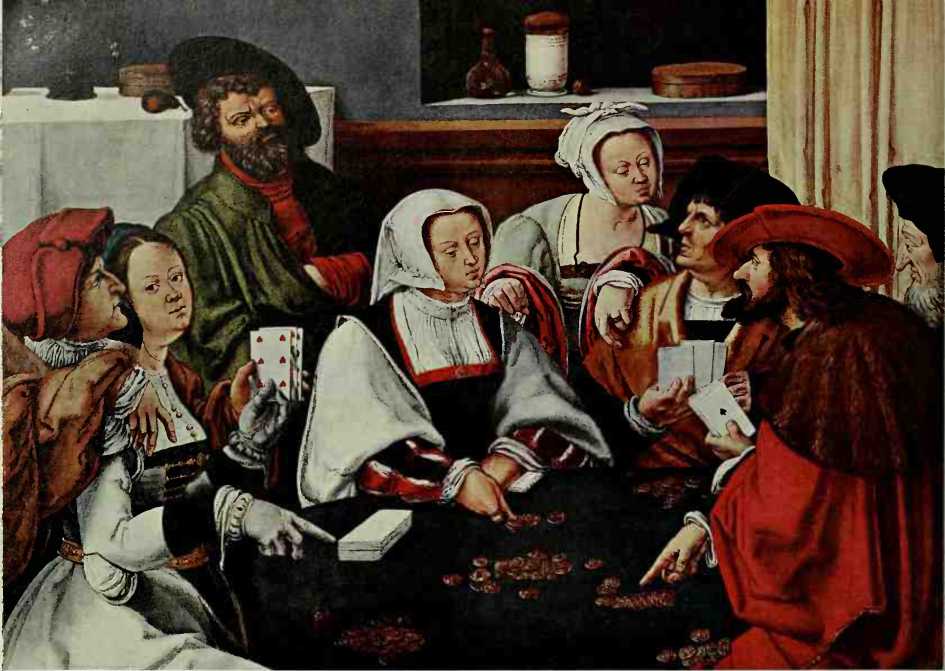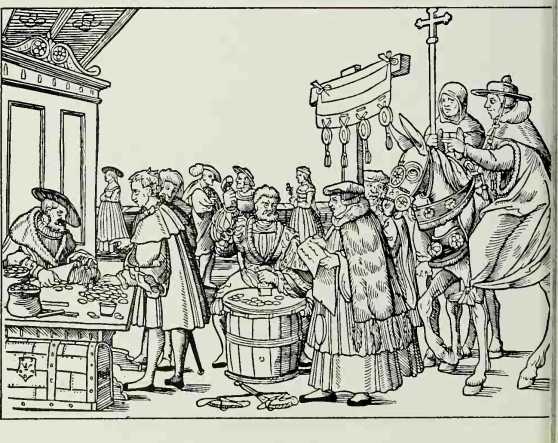
To increase their efficiency—and profits— merchants and bankers pooled their resources and formed companies that were prototypes of today's business corporations. One such firm, imaginary but typical, is depicted in this allegorical print, made in 1585. TTie firm's many specialists —bookkeepers, cashiers, couriers, middlemen who were skilled linguists—describe their jobs in quaint verses, translated here from the original German. At top center, the head of the company is seated beneath the firm's master ledger, which he alone could consult. At bottom center stands Lady Luck, a popularized version of the Goddess of Fortune, who was believed to determine the fate of all man's ventures.
The operations of a great commercial house were far-flung, diversified and complex. Most firms depended for the bulk of their income on interest from loans and on profits obtained from fluctuations in prices and exchange rates. In addition, many firms invested heavily in mining, industry and real estate. By these various enterprises, a few houses grew so powerful that kings came to them to finance wars.

SELLING INDULGENCES under symbols of papal authority, clerics and bankers' agents collect money from Catholic townspeople for form letters absolving sins. The sale price varied according to the buyer's social class.

GAMBLING AT CARDS, four burghers, each one advised by a kibitzer, puzzle over the play of a hand. The cards they are using have plain white hacks—a deterrent to cheaters who were skilled at marking fancy-hacked decks.




 World History
World History









